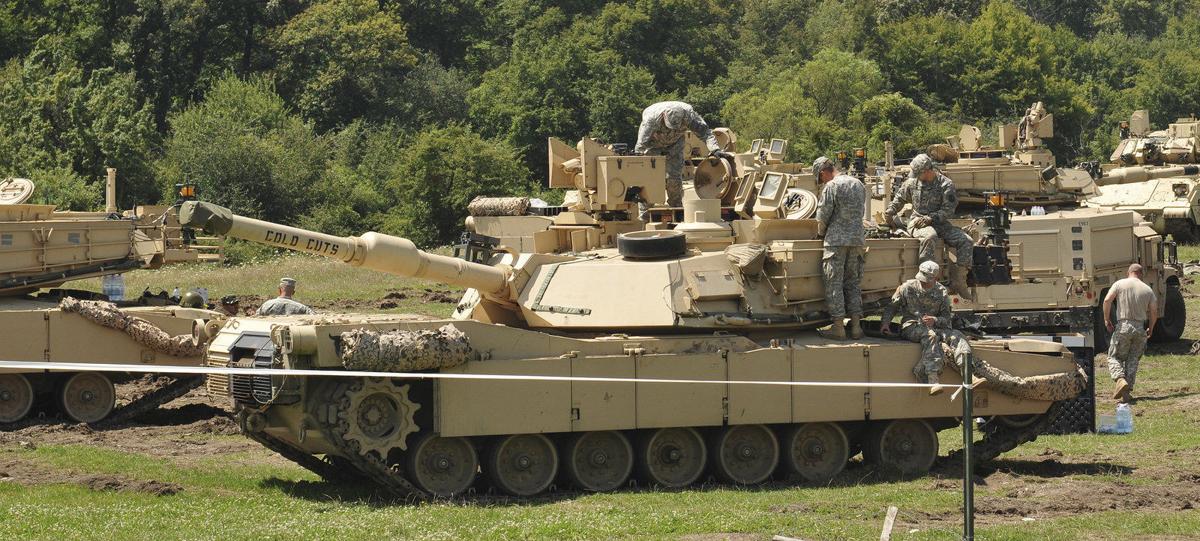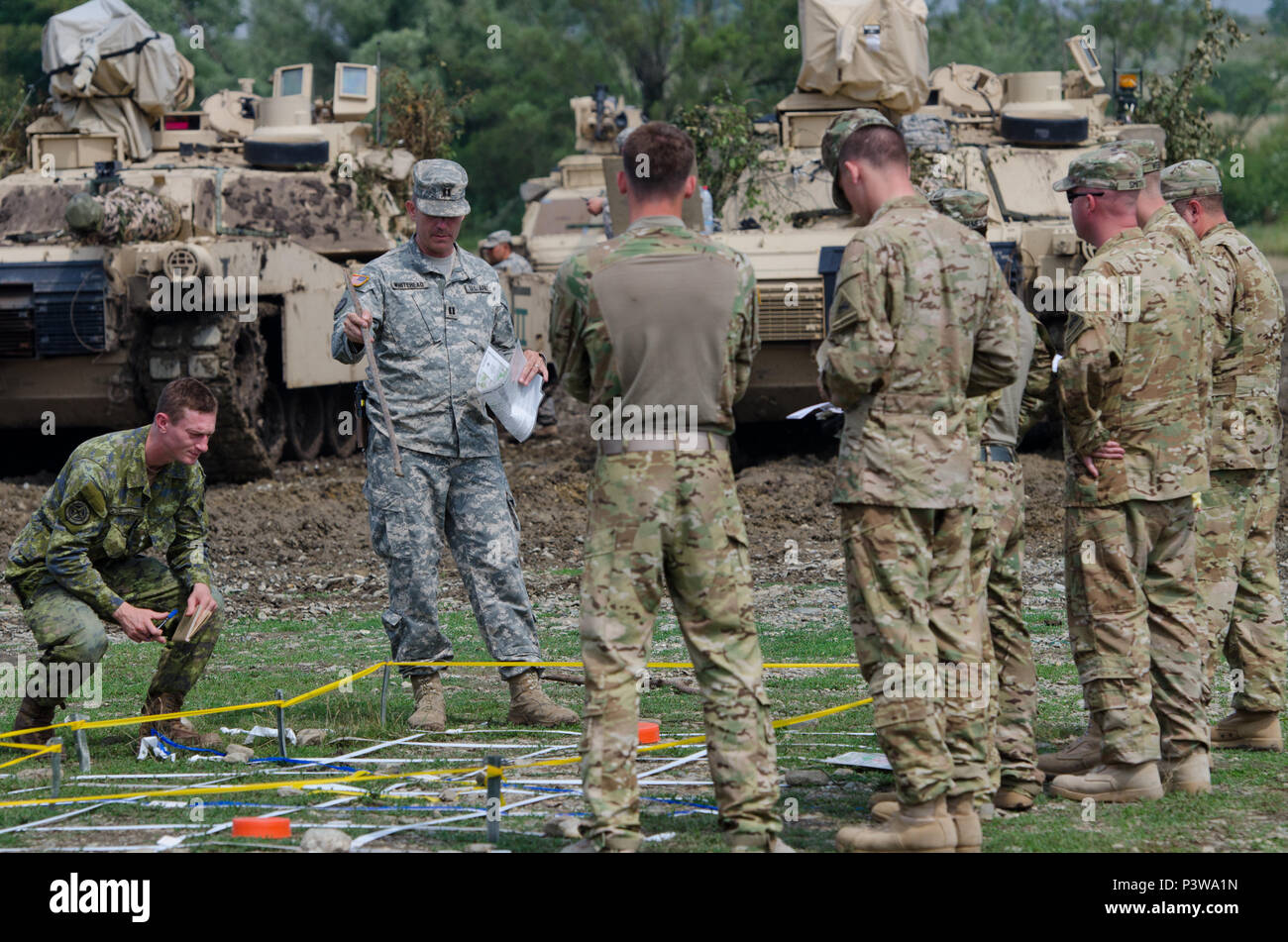Blackadder1916
Army.ca Fixture
- Reaction score
- 2,892
- Points
- 1,160
Where to start?
If reality didn't poke its ugly nose in, my first thought would be that a reserve formation/unit should be organized the same as a regular formation/unit. This being Canada, however, there would be significant differences/challenges in manning and equipment but to mangle the first principle of war "selection and maintenance of the aim" shouldn't the aim be to "train as you would fight" (another prime guiding axiom). If a reserve formation/unit would have to be reorganized if placed on active service (to mirror a reg one that it may replace or partner with in a div/bde) then how is that different than the status quo. If we are looking at FSCs to assume the 1st line support functions of reserve arms units then why would the same not apply to reg units?
If there was howling (and backstepping) about mortars to the guns and pioneers to the engineers, would there not be a similar reaction to losing control of A and B echelons?
Not just no, but f*** no! Obviously, this is a much closer personal issue to me. Of course, current (and future) logisticians are undoubtedly much smarter than those I worked with in decades long past and they will a much better grasp of the principles of providing health support with all its nuances and idiosyncrasies. (that's sarcasm for those who missed it) However on the rare occasions when we tried to incorporate a 2nd line medical element (e.g. an Evac Pl when that was in the Fd Amb org - I'm drawing on experience in 4CMBG ) with a log organization, like an FLG , it didn't work well.
That's not to say I agreed with the establishment of a separate HS organization that included all medical units and pers but nobody asked my opinion back then. I would have much preferred maintaining medical elements integral to units. And while you seem to have assumed 1st line medical support in US Army arms units are, like supply and maintenance functions, provided by a FSC that's not the case - or at least not doctrinally. As example, there is still a medical platoon in the HHC of an infantry bn. See https://armypubs.army.mil/epubs/DR_pubs/DR_a/pdf/web/ARN6672_ATP%203-21x20%20FINAL%20WEB.pdf go to page 28.
And so we don't continue to trip over "lines" and "echelons" and "roles" (the current correct doctrine term) when describing HSS an interesting read is this precis at http://armyapp.forces.gc.ca/SOH/SOH_Content/CACSC-PUB-HSS%20(2015).docx
While Reserve medical coys/pls may have been incorporated into Militia Svc Bns at one time for ease of administration, fd ambs (or other 2nd/3rd line medical functions) have never been doctrinally included in logistics units.
FJAG said:My previous position was that they should be established the same way as a regular force battalion with a complete headquarters coy/bty/sqn. (Remember that my basic premise is that we should have far fewer reserve brigades and units but that all of our current reservists should be organized into full sized, fully equipped and deployable units and formations)
Since then, I've become more tilted towards restructuring ourselves along the line of US Brigade Support Battalions (BSB) and their Forward Support Companies (FSC). Basically, in a US Brigade Combat Team (BCT), none of the manoeuvre, artillery or engineer battalions have what we would call a headquarters company. The BSB has a transport company, a supply company, a maintenance company, a medical company and one FSC for each inf, armor, arty or engr battalion in the BCT. Each FSC is configured specifically for the type of battalion it supports and is generally always assigned to the same battalion. Within the National Guard, the specific FSCs would be located in the same armory or very close to the battalion HQ that it supports.
If reality didn't poke its ugly nose in, my first thought would be that a reserve formation/unit should be organized the same as a regular formation/unit. This being Canada, however, there would be significant differences/challenges in manning and equipment but to mangle the first principle of war "selection and maintenance of the aim" shouldn't the aim be to "train as you would fight" (another prime guiding axiom). If a reserve formation/unit would have to be reorganized if placed on active service (to mirror a reg one that it may replace or partner with in a div/bde) then how is that different than the status quo. If we are looking at FSCs to assume the 1st line support functions of reserve arms units then why would the same not apply to reg units?
A possible disadvantage is that the FSC Coy Comd is generally a Log/RCEME officer rather than an inf/arty/armoured/engr officer as would be for a HQ Coy/bty/sqn. Is that really a disadvantage though?
If there was howling (and backstepping) about mortars to the guns and pioneers to the engineers, would there not be a similar reaction to losing control of A and B echelons?
Final question: should the Fd Ambulance come under command of the Service Bn (like in a BSB) and, more importantly, should the medical platoons/sections be part of the Fd Amb and forward deployed/attached with their respective bns/regts as per the FSC (i.e. the forward deployed med platoon would be a sub/sub unit of the FSC?
Have at it.
Not just no, but f*** no! Obviously, this is a much closer personal issue to me. Of course, current (and future) logisticians are undoubtedly much smarter than those I worked with in decades long past and they will a much better grasp of the principles of providing health support with all its nuances and idiosyncrasies. (that's sarcasm for those who missed it) However on the rare occasions when we tried to incorporate a 2nd line medical element (e.g. an Evac Pl when that was in the Fd Amb org - I'm drawing on experience in 4CMBG ) with a log organization, like an FLG , it didn't work well.
That's not to say I agreed with the establishment of a separate HS organization that included all medical units and pers but nobody asked my opinion back then. I would have much preferred maintaining medical elements integral to units. And while you seem to have assumed 1st line medical support in US Army arms units are, like supply and maintenance functions, provided by a FSC that's not the case - or at least not doctrinally. As example, there is still a medical platoon in the HHC of an infantry bn. See https://armypubs.army.mil/epubs/DR_pubs/DR_a/pdf/web/ARN6672_ATP%203-21x20%20FINAL%20WEB.pdf go to page 28.
And so we don't continue to trip over "lines" and "echelons" and "roles" (the current correct doctrine term) when describing HSS an interesting read is this precis at http://armyapp.forces.gc.ca/SOH/SOH_Content/CACSC-PUB-HSS%20(2015).docx
MilEME09 said:Given that the CO of a service battalion is in charge of rear area security in our doctrine, having medics, and MP's for example attached to us makes sense, they once were as well until about the 1960's as i recall.
While Reserve medical coys/pls may have been incorporated into Militia Svc Bns at one time for ease of administration, fd ambs (or other 2nd/3rd line medical functions) have never been doctrinally included in logistics units.





